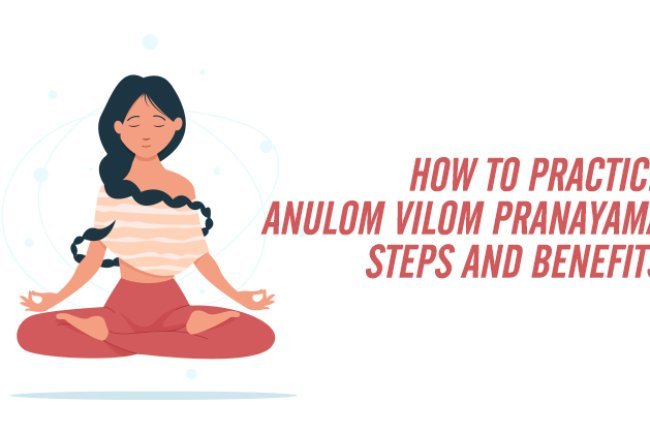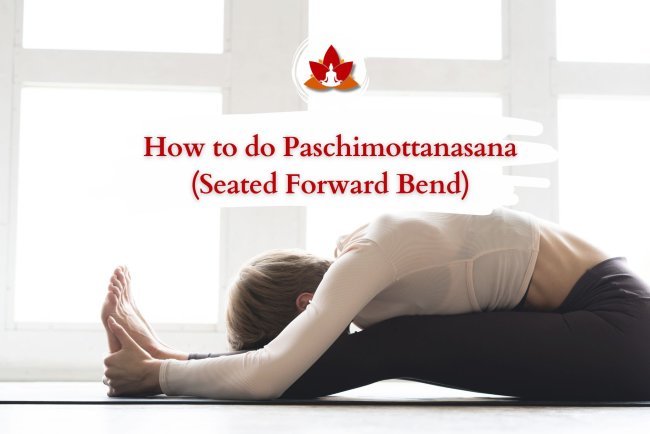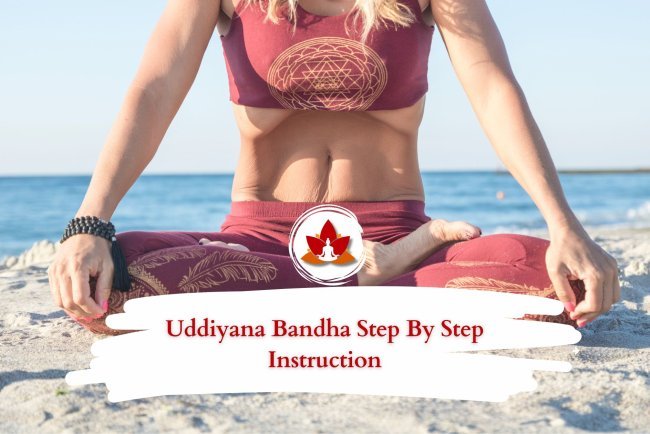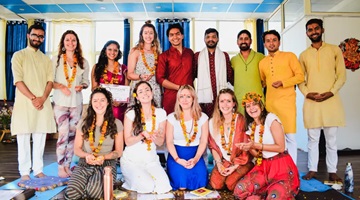How To Do Yoganidrasana (Sleeping Yogi Yoga Pose) And Its Benefits
Find the secrets of Yoganidrasana and unlock a world of physical and mental benefits with our teachers guidance easy-to-follow guide and start reaping the benefits today.
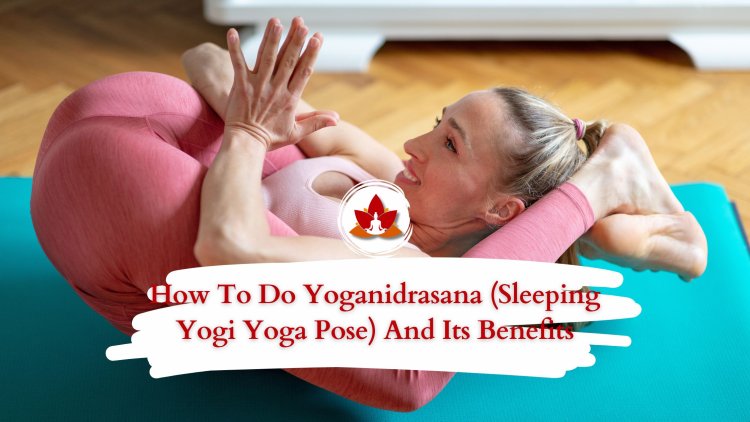
What Is Yoganidrasana (Sleeping Yogi Yoga Pose)?
Yoganidrasana is a word in Sanskrit and the pronunciation stands like YoG-AA-nid-RAA-sa-nuh the meaning of the Yoganidrasana is Yoga = unite / nidr = sleep/asana = pose. This is s very advanced level pose which is a reclining pose that generally works on the back muscles than on the hamstrings, calve area, chest, hips, inner thigh, pelvis, etc. The Yoganidrasana or the Yoga Nidra pose strengthens one’s several body parts making one strong. Some other names are Leg Behind-Head pose, Yoga Sleep Pose, yoga nidrasana, Yoga Nidra, Yoga Nidra pose, etc. This is believed to be the pose performed by the sleeping yogi.
This is considered as the sleeping posture for yogis. Here the legs are put back and the torso is in between both the thighs. The Yoganidrasana posture highly stretches the body and is a highly practiced pose in the ashtanga yoga tradition. The yoga Nidra asana works mainly for the flexibility and strengthening of different body parts. A combination of awesome meditation and yoga sleep, this posture helps in so many ways in making life more peaceful. The yoga nidra pose completes one’s sleep along with the meditation feature. The pose will help in making the body much more flexible and also reduce several problems helping the body to cure. The Yoganidrasana pose gives a certain level of satisfaction that is worth the hard work involved in it. Thus let us learn more about Yoganidrasana and its benefits and steps to perform it.
Steps Of Yoganidrasana (Sleeping Yogi Yoga Pose)
Now let us discuss the process to do the Yoganidrasana pose. Read all the steps that are written below to learn the yoga pose properly. This yoga is slightly advanced but can be achieved with regular practice. Tue below written points will guide you through the entire process.
- The first step is to be on the Savasana or the corpse Pose. At this stage keep breathing with the knees to your chest
- The next one needs to cross both their ankles across one. There should be some space between the knees at this stage
- The legs should be at the direct of the heads with hands forward in between both legs
- Position the hands at your ankle or around the lower calves to continue to pull the legs in the direction of the crown of the head
- Now very slowly pick your shoulder up from the floor. Here there are high chances of neck strain thus one must be careful
- Continue to breathe as you put your feet and ankles over the head
- At this stage push the feet towards the direction of the floor with the shoulders also pushing forward with the knees pressing
- The heals position should be in such a position during the practice of yoga Nidra that it must seem you are resting your heads on them
- Fold your hands in the prayer position keeping them as close as possible to the sternum
- Then interlock your fingers and be in this position
- Raise the chest slowly to a higher position to open up the lungs
- Hold this position and keep breathing for about 30-60 seconds
- For better results, you can play soothing music and perform this action in the laps of nature
- Now start imagining that your body is just like a feather and focus on each part of the body
- Slowly try and grasp the breathing technique which might be difficult at the beginning of the yoga Nidra pose
- Now as your release unfolds both the hands and keep them behind the ankles
- Now slowly again return to Savasana. Relax and rest a little bit and then again repeat the above steps to perform Yoganidrasana.
Tips For Beginners
- Beginners should first attain flexibility of the body before even performing this pose. Otherwise, there can be a muscle cramp
- At one go must not be the aim for anyone. Beginners should slowly and steadily intake this pose having practiced all the preparatory Poses that are stated below. Flexibility is the key to this posture and there must be a regular practice to achieve this pose
- One first needs to move the different body parts that involve this pose. Much before even performing this pose these activities must be clear and to the point
- Beginners can use props like a pillow or blanket under the head if there is pressure in the vertebrae
- Binding the legs with a yoga state so that it remains there for another time is a good idea
- To keep the head up one can take help from a second party or can take help from the wall or anything hard for support. This makes yoga Nidra slightly easier.
Benefits Of Yoganidrasana (Sleeping Yogi Yoga Pose)
Apart from flexibility, this posture has several other benefits to the body. The yoga Nidra pose calms the body and rejuvenates it for a better and brighter day ahead.
- The entire body of someone who is practicing is involved here and this increases the blood circulation in the body. This makes it more demand for oxygen which makes the body detoxify due to the higher demand for blood circulation
- The posture that here is attained puts pressure on the adrenaline glands in the kidney making them active and improving the blood circulation there making the glands work better
- Stimulates sacral chakra in activating the subtle ideas which again brings in procreation, creativity, movement, successful relationships, and pleasure in the life of a practitioner
- Strengthens the muscles that are involved in the pose with calves, hamstrings, etc getting more flexible with each passing day
- The greater pressure on the lower abdomen promotes digestion. Anyone having constipation can practice this pose and get rid of the problem
- Reduces stress and anxiety. With the regular practice of this pose, the level of stress and anxiety is released and reduced to a higher extent. One feels light and free when this one yoga is being followed
- Gives benefits to meditation as well as sleep. This regulates sleep in a better manner where meditation is also involved.
Precautions
- Keep breathing during the Yoganidrasana. Slow breathing is the key to this posture
- This is an advanced-level yoga pose that tries and performs under an expert yogi. He or she might guide you in a better way and if there are any difficulties proper steps can be taken
- If there is an injury in the spinal, knee, neck, or lower back then kindly avoid this pose. This may be harmful and might cause a bigger problem
- If your hamstring muscles are rigid and you are inflexible avoid this pose. To perform it first perform all the poses on the hamstring, lower back muscles, etc
- If you have high blood pressure avoid this yoga. Practicing this pose while having high blood pressure can be harmful
- Pregnant women should strictly avoid this pose. This pose is not right for the fetus and can have a negative impact
- A person who has undergone certain surgery concerning the parts involved here should also avoid this pose
- One should not force anybody to perform this pose because it can turn out to be harmful. First, the full and final flexibility must be attained before one is performing the Yoganidrasana
- Keeping the breathing process slow and relaxed heavy breathing can be fatal
- As you finish this pose upraise your chest and open it and be in this position for some time before dropping the body immediately
Preparatory Poses
The preparatory pose for the Yoga Nidra pose is as follows:-
- Halasana (Plow Pose
- Supta Matsyendrasana (Supinal Spinal Twist
- BaddhaKonasana (Bound Angle Pose)
These poses make the process a little bit more easy anmore d flexible to perform. For beginners, these poses can be really helpful to achieve the Yoganidrasana pose. One must thus first learn the above-mentioned poses before performing the Yoga Nidra.
Thus these are the few things that one must know before they are trying the Yoga Nidra pose. However difficult the pose might be the pose has immense good results and if performed by someone rigorously it’s absolutely worth the hard work.
For more details regarding the practice join the yoga school in Rishikesh and start with their beginner level 200 hour yoga teacher training in Rishikesh.
What's Your Reaction?







